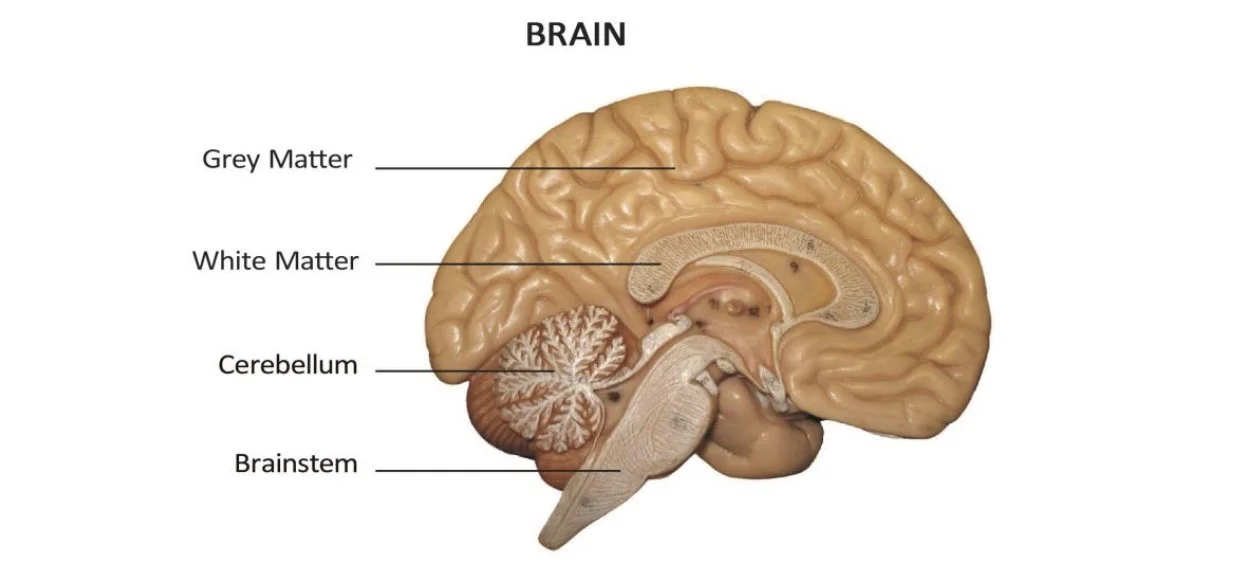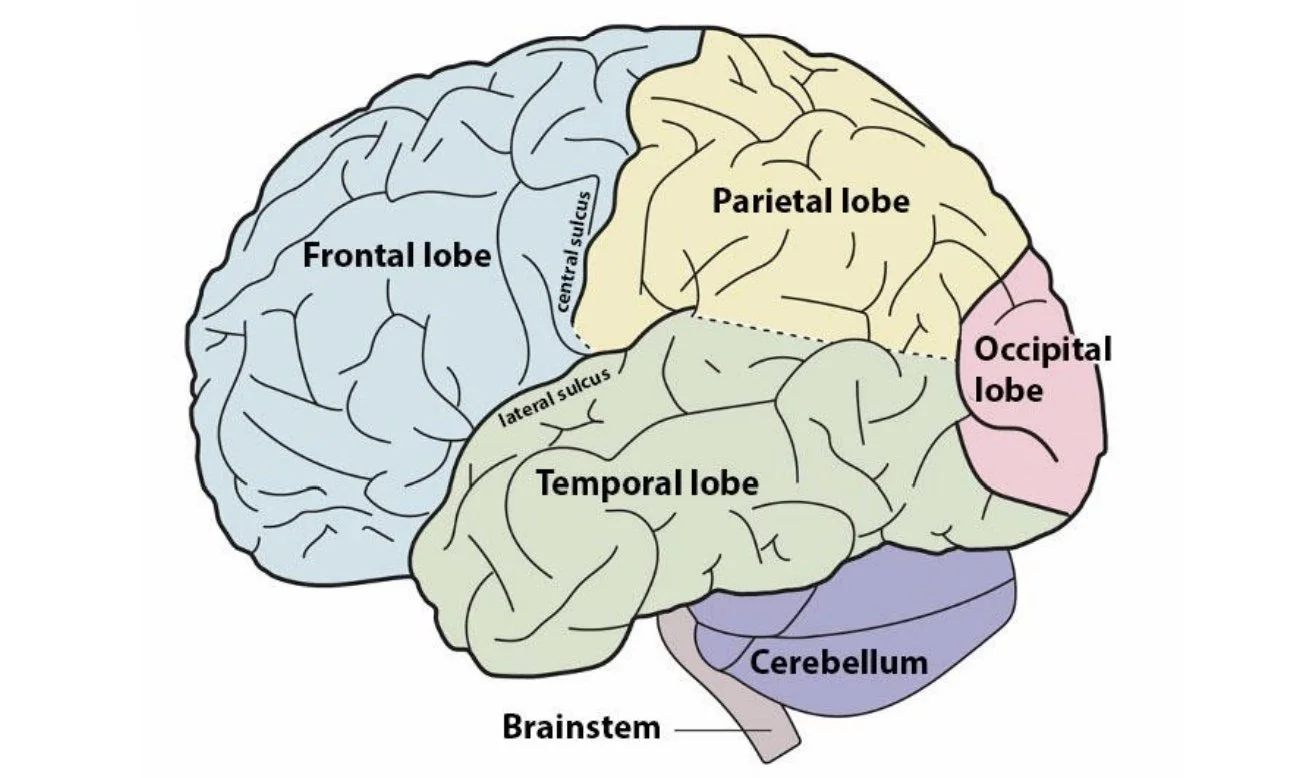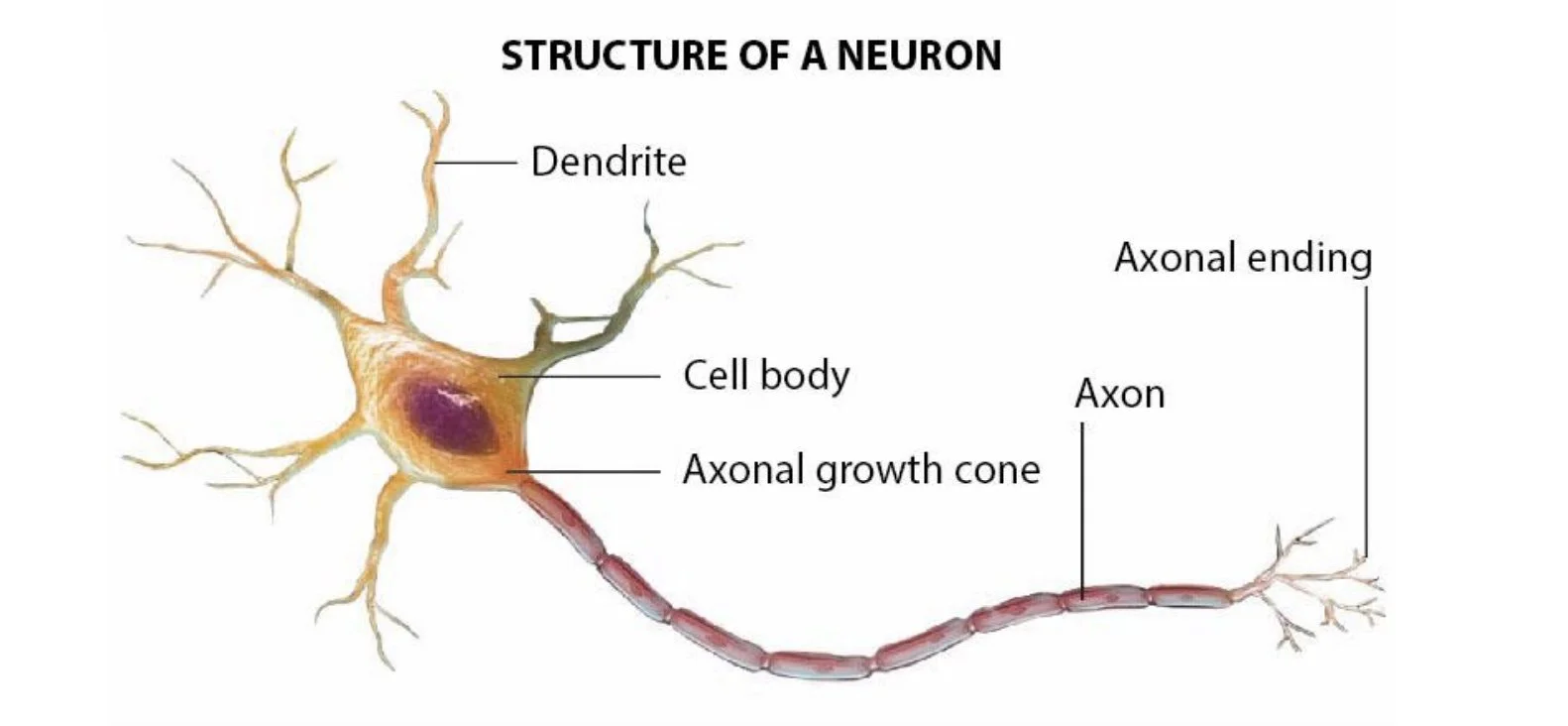As Vedic Meditators, we are well-versed in the sensory aspect of how meditation influences the mind & body. Now, let’s take a moment to familiarize ourselves with the physical mechanics of the Nervous System to add a layer of sophistication to our experience of Meditation.
Here is a brief visual and lexical description of the components of the Nervous System (NS), which controls the body through nerve impulses.
The nervous system is composed of two parts:
1) CNS - central nervous system aka “cerebrospinal axis”
2) PNS - peripheral nervous system
———————————————————————
Central Nervous System (CNS) includes the brain along with the spinal cord.
Now, let’s further articulate our understanding of the CNS into two hemispheres:
RIGHT hemisphere
more intuitive and emotional
better perception of 3D
more sensitive to Music and Art
LEFT hemisphere
memory, abstract thought, logic
analytical and sequential reasoning
1) Frontal lobe
Motor speech area (Broca’s area)
Voluntary movements (of the skeletal muscles, ocular muscles)
Higher-level cognitive tasks, like planning
2) Parietal lobe:
Primarily somatosensory -
Right parietal lobe - spatial awareness
Left parietal lobe - understanding language (written and spoken)
3) Temporal lobe:
Auditory & some Visual processing
Recognition of objects, shapes, and people
Regulates the processes linked to short-term memory
Some language comprehension, supported by Wernicke’s area
Hearing, sight, taste, and emotions.
4) Occipital lobe
Visual center - recognition of shapes, curves, and colors
5) Cerebellum
Managing cognitive processes linked to coordination
Regulates the heart and respiratory rate
Pavlovian responses
The Brainstem is where decussation occurs.
rootword : decussate - to cross over, creating an X
Most motor nerve fibers originating from the cerebral cortex “cross over” to the opposite side in the brainstem, specifically in the pyramids of the Medulla Oblongata.
The Peripheral Nervous System (PNS) consists of the glands, cranial, and spinal nerves and is divided into two parts: PNS Autonomic & PNS Somatic
PNS - Autonomic:
Sympathetic & Parasympathetic
Somatic:
12 Cranial Nerves & 5 Groups Spinal Nerves
PNS - Somatic: Sensory & Motor Pathways
Radiating Out: Motor Pathways (M)
Then the extension of the brain moves down the back as nerve fibers with the spine and meninges to protect the 31 pairs.
Collecting In: Sensory Pathways (S)
These begin at the base of the spine and collect information and send it up to the Brain to process and interpret.
Quick Breakdown:
CRANIAL NERVES 12 are either sensory (S), motor (M) or both (SM).
Sensory (afferent ) & Motor (efferent) nerve fibers*
S - I: olfactory nerve
S - II: optic nerve
S - VIII: vestibulocochlear nerve
M - III: oculomotor nerve
M - IV: trochlear nerve
M - VI: abducens nerve
M - XI: accessory nerve
M - XII: hypoglossal nerve
SM - V: the trigeminal nerve (ophthalmic, maxillary, mandibular)
SM - VII: facial nerve
SM - IX: glossopharyngeal nerve
SM - X: vagus nerve
SPINAL NERVE GROUPS 5 are all mixed (SM)
1) between C1 and C7 - Cervical nerves: 8 pairs
2) between T1 and T12 - Thoracic nerves: 12 pairs
3) between L1 and L5 - Lumbar nerves: 5 pairs
4) between S1 and S5 - Sacral nerves: 5 pairs situated
5) A vestigial nerve is found at the CO - Coccygeal nerve
Neuron - a structural and functional basic unit of the nervous system, with remarkable longevity & a complex regeneration process. Due to their high metabolism, they require a very high supply of oxygen and glucose. Neurons are responsible for both emitting and transmitting nerve signals (electrical signals) with the aid of proteins that regulate the ion channels.
- Two main properties:
1) Excitability - the capacity to develop an action potential resulting in polarization or depolarization.
2) Conductivity - enables the neuron to transmit or receive information without losing any of it along the way.



